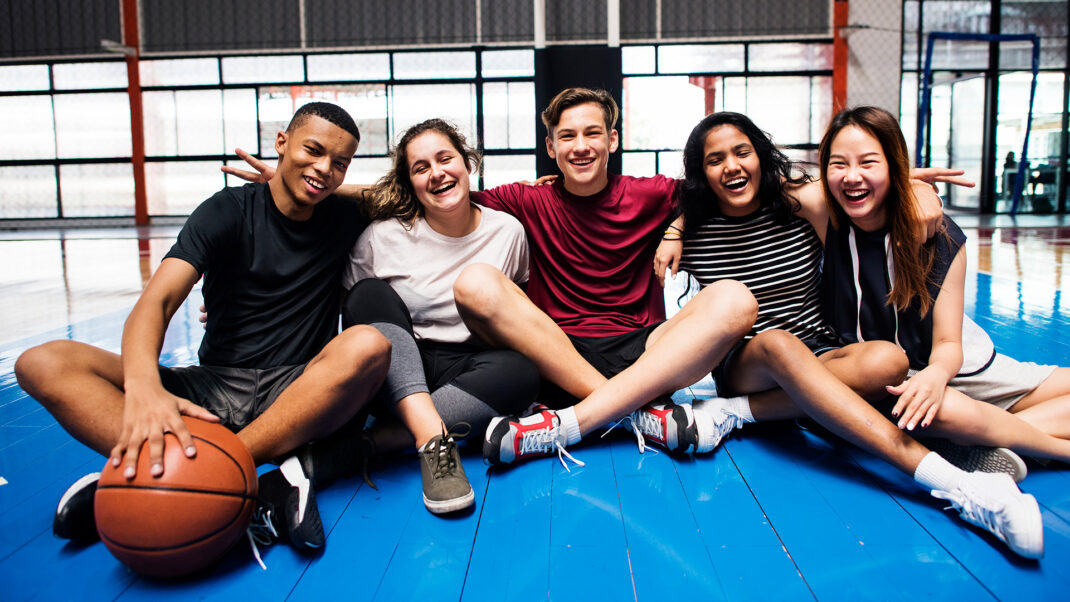Digital Fitness Lessons With Impact
If you’re not studying larger, slicker digital models to enhance your offerings, you are missing a critical moment to borrow from the best, improve the rest and increase your impact on fitness.
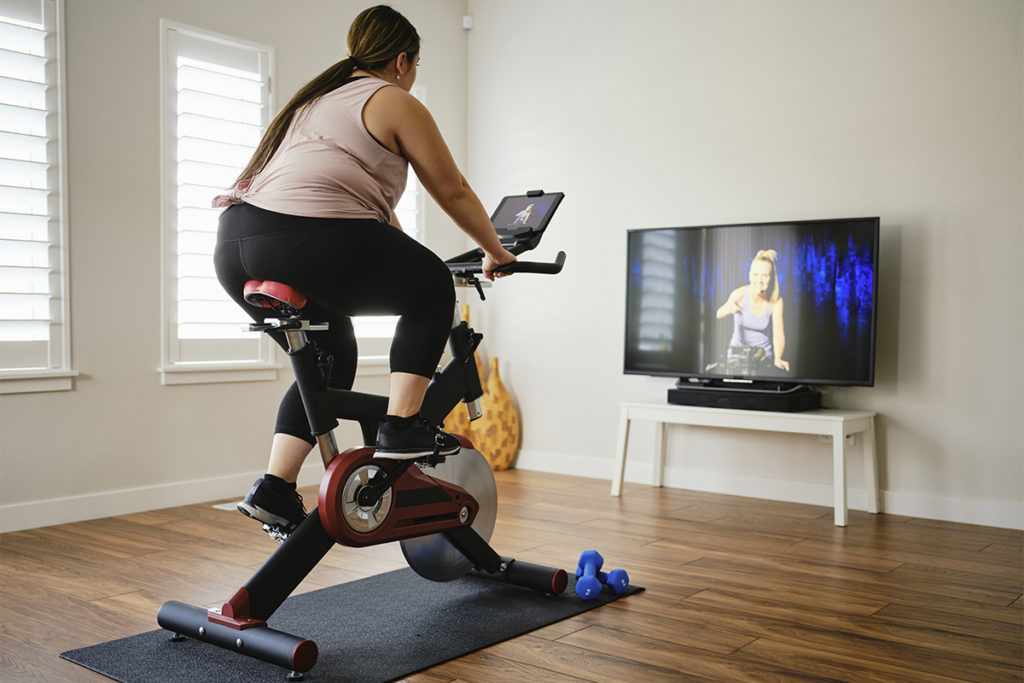
Are you among the many fitness professionals who are sweating a little over how the fitness-tech giants are going to impact you in the near (and distant) future? Well, you’re not alone. We’ve all seen their skyrocketing growth over the past year or so. But let’s pause for a second and consider this: Digital fitness is nothing new.
In fact, it started with Jack LaLanne in the 1950s (see “The Evolution of Digital Fitness,” below). We all managed to coexist with his “livestreaming” TV show and, later, “on-demand” VHS and Blu-ray workouts. We’ll make it through this wave of change, too.
After all, there are more than enough potential participants to go around. According to the 2020 IHRSA Global Report, the entire fitness industry had approximately 184 million members pre-COVID-19 (IHRSA 2020). Put another way, we served less than 5% of the global population before the world shut down. Since many people began to prioritize fitness during the pandemic, it stands to reason that the world needs us now more than ever. If our goal is to Inspire the World to Fitness®, it’s best we work together!
What’s more, there will always be unique benefits to working out with a real human being whom you actually know and can visit in person, if you like. That’s something a digital platform can never quite provide.
Moving forward, it may be in our best interest to take inspiration from tech guru Bill Gates, co-founder of Microsoft, who once said, “I am not in competition with anyone but myself. My goal is to improve myself continuously.”
Instead of viewing companies like Apple Fitness+, Mirror and Peloton® as our opponents, what if we drew lessons from their successes to enhance what we provide in person? Getting to know the “competition” is a great way to jumpstart your personal evolution.
Dive Into the Digital Fitness Divide
“Digital fitness” is a broad term that encompasses digital devices, software and applications that deliver health and fitness experiences. Under this umbrella term are wearables, fitness apps (accessible via web-based, mobile and smart TV interfaces), digital fitness devices, on-demand programming and livestreaming services. Engaging with these digital offerings, from larger direct-to-consumer outfits to those produced by people like you, can reinvigorate you.
“At first, when I started looking at all of these new online options, I was overwhelmed. Then, it became a wake-up call,” says June Kahn, owner of Center Your Body Pilates, based in Louisville, Colorado. “I quickly gained a better understanding of what my customer might need beyond what I was already providing. It fueled me, in a way, to take a hard look at what we were doing and how we could do it better.”
As you begin exploring this realm, take time to investigate the following:
Positioning. How are these platforms marketing themselves to current and potential customers? What value do these services place on fitness? And where does their offering fit into the customer’s overall health and wellness journey?
Programming. What formats are they offering? How long are classes? Are workouts provided à la carte or as a series?
Presentation. What is the overall experience these platforms are providing? How does the user experience mirror or differ from yours? What type of preparations do instructors appear to make before sessions?
Personalization. How do digital-first offerings provide personalization? How do instructors draw participants into the experience, help make the workout successful for them or help them connect to a larger community?
“By exploring other companies, we were able to incorporate ideas we discovered while using their platforms. We became so much more in tune with the member journey,” explains Staci Alden, group fitness manager of the PRO Sports Club, based in Bellevue, Washington.
Below, we provide a step-by-step plan to guide your journey into the new fitness frontier.
See also: 21 Best Practices to Help You Survive the New Normal
Step 1: Find Inspiration in the Digital Fitness Arena
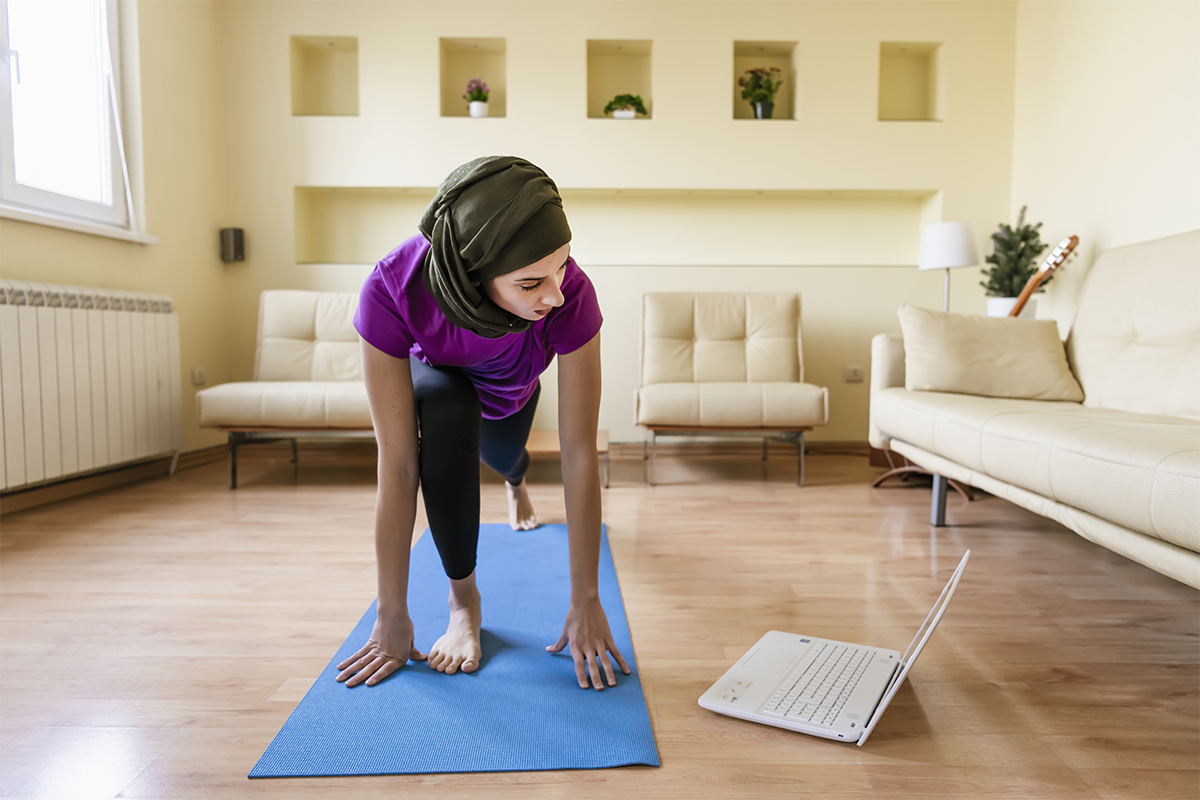
There are some tools in our toolkit that enable us to create a more personalized experience.
Upon inspection of digital fitness offerings available, you will begin to see ways you might build on their approach. Here are a few observations and insights from industry pros on positioning, programming, presentation and personalization, plus prompts to get you thinking more deeply about your own work.
Positioning
Today’s effective direct-to-consumer teams celebrate the user’s choice to participate, whether the platform is one part or the entirety of the customer’s exercise regimen. While these teams provide plenty of formats, time lengths and intensities to make their programming the only thing a customer does, very rarely is there overt pressure to engage exclusively with their programs. Instead, they build loyalty by educating consumers on how to blend what they are doing with other workouts on the platform, as well as any outside activities.
“If [fitness professionals] acknowledge that our clients may have discovered piecing together workouts from many sources fits better with their lifestyle, we will be okay!” says Aimee Nicotera, MS, owner of Aimee Nicotera Fitness & Virtual Fitness Studio, based in Marston Mills, Massachusetts. “Now, they can work out with us in person one day, use our digital options another and still make use of some of these bigger players. It’s a win-win.”
Newer digital products also acknowledge that lack of time is a real constraint, and they double down on the idea that a little bit is better than nothing. We can continue to encourage clients to prioritize self-care and enjoy shorter workouts wherever and whenever they’re offered. Providing workouts of various lengths—from 5- to 10-minute “exercise snacks” to 45- to 60-minute sessions (and all waypoints between)—gives participants choices and gives you a greater opportunity to fit into a person’s busy life. No matter what, celebrate the fact that people show up at all. Acknowledge their commitment to self-care whether they are with you for 5 minutes or an hour.
Many digital platforms are not two-way broadcasts, which means the instructor cannot see the participants. While we may see this as a constraint, many participants have expressed how refreshing it is to be able to engage with the content as they see fit and not feel pressured to do what the instructor is doing. Making this observation, Alden says, “We started to respect and understand the commitment made and [the] risk participants take when trying something new in person, and [we adjusted] our studio and virtual classes to increase their confidence.”
Consider this: How can you position your programming to support where, when and how participants prefer to piece together their workouts? What other offerings (from you or your club) might contribute to a better overall routine for those who still enjoy taking a class with you? To help participants build confidence, can you develop some shorter introductory classes—a series of short “how to” videos that give step-by-step breakdowns of poses, lifting technique or dance steps?
Programming
While programming via digital platforms may look very similar to many of the selections we’ve long offered in person at clubs, you’ll find a few twists designed to increase adherence and success among veterans and new exercisers alike.
To accommodate time-crunched at-home exercisers, most of the platforms provide recorded and streaming classes in a variety of lengths, ranging from 5 minutes to 60 minutes, for just about any type of workout.
“The best learning from the big direct-to-consumer digital players has been duration, duration, duration! Hopefully, we’ll take their lead and realize shorter options [can] provide an entry point,” suggests Cameron Chinatti, Boulder, Colorado–based CEO and founder of Surve Productions. “Surviving 15 minutes of exercise sounds much more palatable to the new exerciser than an hour. While it might not be possible to offer microclasses in person, we should acknowledge the role they play in providing a gateway to what we offer in person.”
Chinatti also mentions how programming itself improves as duration decreases. Without extra time for fillers, instructors must become more specific about a class’s goals and objectives, which is evident in the highly specific titles, descriptions and filters that larger platforms use to assist customers in navigating class offerings. The inclusion of qualifications like “introduction, beginner, intermediate, advanced” and “all levels” also helps users make intelligent choices.
Even if you can’t shorten your classes, consider evaluating the number of class formats you offer, the varied “goals” you include in each class (e.g., strength, cardio, core and more), and ways to improve the quality of your class descriptions. While creative titles and flashy descriptions may help with marketing, consumers are empowered when they know what they will get when they walk through the door (or click the “play” arrow).
Finally, several of these platforms offer a healthy mix of “à la carte” options alongside series programming. With à la carte, customers can easily come and go as they please—either viewing schedules and making plans to attend or choosing a workout on the spot. For those who do better with a structured program, there are the series options, each centered around what to do to achieve a particular result (e.g., a 4-week intro to strength training or a 6-week jump-start).
“Series programming with a beginning, a middle and an end is so powerful. I currently feel Beachbody® does this better than anyone else in the direct-to-consumer space. With a schedule to follow and basic periodization built into all of their programs, it’s easy to schedule your workouts over several weeks,” adds Chinatti. “I’d love to see more clubs offer 4- and 8-week programs via video-on-demand formats in group fitness.”
Consider this: Are your class descriptions written to help participants make informed choices? How might you begin unchaining yourself from the programming of the past, whether by adjusting the timing (how long a class is), reconsidering the need to include all components of fitness in one workout (the class’s specificity) or curating programs from your individual classes (à la carte versus series)?
Presentation
Presentation is everything, and the larger direct-to-consumer apps certainly make it a point to keep this top of mind. While some of the more obvious aspects of presentation—such as production quality, music, wardrobe and video editing—would be hard to replicate on our budgets, we can look at the work these teams do behind the scenes to enhance the user experience.
Preparation is essential to ensure the experience is top-notch. When planning a class, take cues from the more prominent budget platforms and consider five components: structure, script, set, style and soundtrack. Each of these should be planned, coordinated and rehearsed to some degree.
Structure (the framework of the class) and script (how you will introduce, cue and close the class) may be relatively familiar to seasoned instructors and may require little attention, but do consider what catchphrases you repeat, how you are cuing and whether you want to weave educational messaging into your class.
For set, consider whether your space is not only clean but tidy. Also ask yourself if you are camera-ready, even if you’re not filming. You may want to wear branded clothing when teaching and have requirements for neatness of appearance. Style is your persona/personality as an instructor. Be consistent and be yourself!
Finally, your soundtrack really matters! Prepare a playlist for each workout and arrive early enough to adjust sound and lighting. (Digital glitches can sidetrack any instructor!)
“While you may have shortcut prep in a pre-shutdown world, our participants sampled and experimented with some pretty over-the-top content and production while they were away. Now is the time to elevate your own content expectations and find ways to up your game by preparing what your participants see, do and feel,” explains Tricia Murphy Madden, education director of Savvier Fitness, co-creator of Barre Above® and co-founder of Homeroom Fit. “Prepping for your video-on-demand or streaming classes should mimic preparing for a full-scale DVD production a decade ago, knowing that content can live on forever. This may sound a bit over the top, but the game has changed. We can no longer rest on our laurels.”
Consider this: How might you need to improve your preparation to enhance the user experience? Does everything feel well planned and in sync? Think about each part—structure, script, set, style and soundtrack—individually and collectively.
Personalization
As we build back better, we mustn’t assume that our offerings will win out over the digital giants just because we can know our participants personally and see them face-to-face (whether in person or on a two-way broadcasting platform). Digital platforms show us there are many ways to create opportunities for connection.
In Self-Determination Theory, which is used to study motivation and personality, one of the main components of a person’s experience is “relatedness.” Relatedness is what participants are seeking and what we are describing when we use the word “connection” (CSDT 2021). Relatedness is more than being together physically, and digital platforms have explored alternate routes of fostering connectedness.
For some people, knowing they have the same interests as others is enough; this can be as simple as showing up for the same class simultaneously, whether in person or digitally, or seeing what classes friends have taken by “following” them on a platform. For others, seeing someone’s name on the “leaderboard” can tick the box for relatedness, whether the person is competing or not. Even tuning in via social media for a “live” discussion before or after class can do the trick.
Alden concludes, “[The] artful consideration of customization is here to stay. The big players in the digital space have made an art of allowing the participant to have her favorite format, with her favorite instructor, at any time of day. Participants can build a customized experience that respects how they’re feeling that day at that moment. Not only is this empowering for the customer, but it can be so freeing for instructors, as well.”
Fortunately, there are some tools in our toolkit that enable us to create a more personalized experience—and they are distinct differentiators of in-person programming (more on this, below).
Consider this: Which of the strategies described above might you be able to leverage in a post-COVID-19 world to increase your relatedness beyond eye contact and physical proximity?
See also: 5 Lessons From Virtual Fitness Companies
Step 2: Highlight Your “Distinct Differentiators”
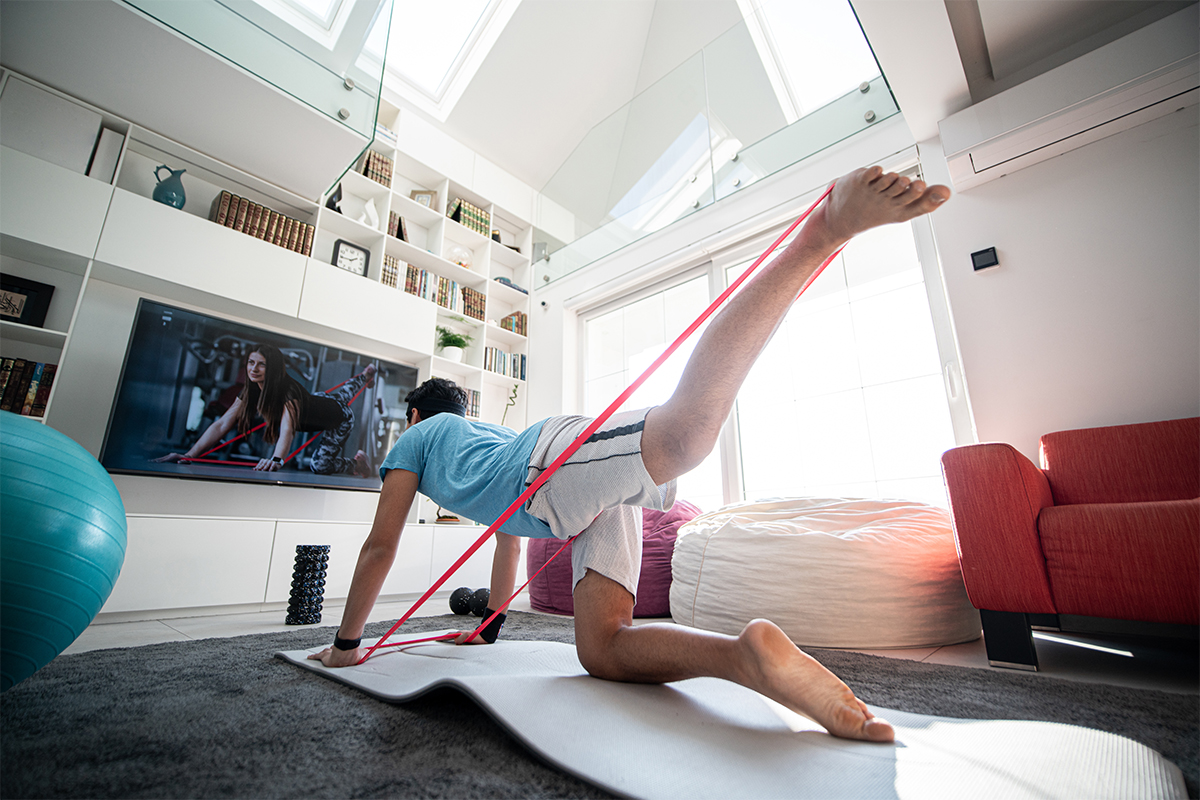
There is power in using the physical environment in your programming, which is one thing digital cannot replicate.
In this new digital fitness frontier, it will be vital for you, as an in-person instructor and club owner, to define and articulate what truly makes your offerings unique. Instead of competing with the Pelotons, Mirrors and Apple Fitness+’s of the world, you’ll need to get clear about what your local clients cherish—and make sure you do more of that!
“To know your competition is imperative, but it is vastly different than trying to be your competition. Once I research [my] perceived competition, I can turn the lens back inside and look more closely at who we are, what we do and our big why. Then, I can optimally align my operations, programs and offerings with my company’s own mission, goals and capacity, balancing current industry trends and client needs,” says Jane Bahneman, owner of Nectar Yoga Studios in Alexandria, Virginia.
Bahneman adds, “Instead of casting a wide net with hopes of catching something, get specific about what you want to attract. I use this metaphor on purpose: ‘A fisherperson uses a specific bait on a specific hook. They head out to a particular body of water at a particular time of day because they know what they’re trying to catch.’ Try that!”
Katie Haggerty, co-founder of The Move for Good, based in Minneapolis, reminds us of two important differentiators we have as local instructors: “I find there are two compelling advantages to classes taught in a community, by people in that community, that we should highlight: intimacy and real-time modifications.”
She explains that intimacy involves being seen and heard, which is not always possible in a virtual environment—just as tuning in to a sporting event from home never feels the same as being there live, with the opportunity to chant in unison with other fans and give out random high-fives.
In the live setting, it’s also possible to provide on-the-spot modifications for individuals and the group. If prepared, in-person classes allow for quick shifts, such as changing out a song to influence the mood in the room or swapping out an exercise that isn’t quite working. With in-person instruction, you can even sneak away from the front of the class to help a participant. Be sure to think through how best to use this secret weapon in each class you teach!
Nicotera reminds us of the power of using the physical environment in your programming, which is one thing digital cannot replicate. “Digital will always leave the participant facing the device, and usually doing so alone, but you can mix it up. For example, you can split your class up for fun face-offs, reorient everyone to face a different studio wall for a certain section of the class, or add partner work,” she explains. “From time to time, consider completely changing the scenery by taking the group for a lap around the parking lot. Get creative!”
Consider this: Exploring your who, what and why can help you find ways, big and small, to stand out. Is it a specialization you offer? Do you have a clever way of delivering your classes? Is it a unique gathering of participants? Also keep in mind that occupying the same space as a like-minded group can be magical, if carefully orchestrated. How can you lean into this, create intimacy, make moment-by-moment adaptations and ensure that every member of your class feels seen and heard by you and others?
Step 3: Make Digital Fitness Tools Work for You
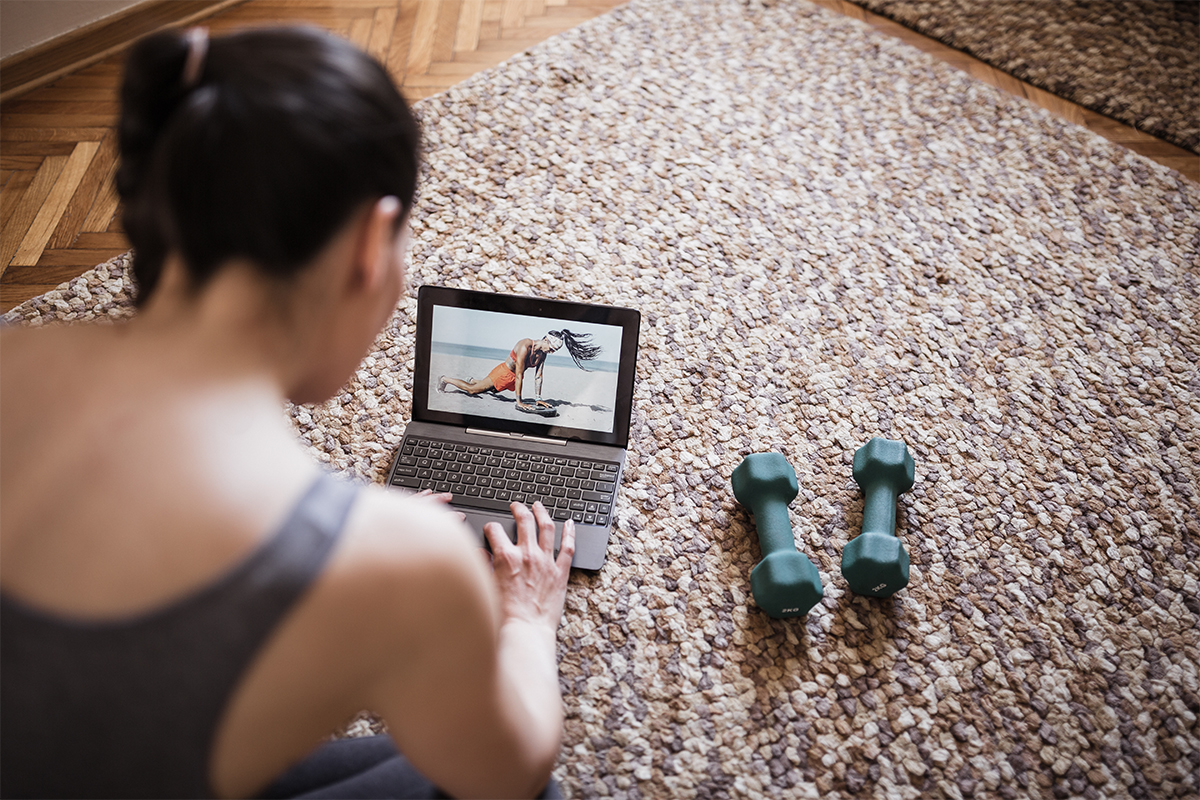
Find ways to use digital fitness tools your members can access to complement what you have to offer.
Fitness, exercise and movement are highly personal, driven by the individual’s needs, preferences and experiences. What works for one doesn’t translate into success for another. There are many options and tools for success.
Now and into the future, we must respect that members may choose to participate in our classes alongside other in-person and digital options, as well as their own favorite sports or additional types of physical activity. Instead of working against this reality and believing you need their loyalty, shift your thinking to how you can be the one that helps them put that experience together.
Find ways to use other tools your members can access and will find engaging (e.g., digital platforms, apps, outdoor activities), to complement what you have to offer. For example, if you teach strength-based workouts, educate participants about the need for stretching, mindful movement, gentle movement and cardiovascular exercise. Then, provide ideas for making these happen through your colleagues’ offerings, via digital solutions or independently.
Being willing to support members when they cannot be with you shows your genuine desire to help them succeed. You can suggest ways to use digital tools to remain engaged with their wellness journey when they are stuck at home or on the go. For example, if you get to know the digital players’ programming, you can suggest an online workout that will be similar to what you are planning for your in-person class.
Finally, leverage these tools for your own fitness! Have you ever been sidetracked while working out at the gym where you teach (because class participants or staff want to have a chat)? Do you miss out on your personal workouts because it’s hard to find the time? Are you simply in a rut with your choreography, class plans or cuing? Take advantage of direct-to-consumer services to inspire you. Get coached, instead of coaching. Be exposed to new moves—or old moves taught in a new way. See how cues land (or don’t) and learn from the players with big budgets! It’s like attending a master class at a conference every day of the week.
Consider this: When participants experience joy in many types of movement and feel supported in their journey, they find long-term success. How can you help? How can you use digital tools and programming to enhance your own journey as a fitness instructor and a fitness enthusiast?
See also: Providing Excellent Customer Service in the Digital Age
Step 4: Keep Going and Growing!
Adjust your mindset to operate from a place of abundance versus scarcity as we enter the new digital fitness frontier. The awareness created for fitness, our industry and group exercise experiences—particularly by the influx of digital offerings—is something to work with, not against. Learn from the best, improve the rest and bring your unique skills and talents to all those ready to embrace what you have to offer. The world needs you now more than ever. Best you be ready.
The Evolution of Digital Fitness
Digital fitness is not new. We just need to look back to the 1950s to find pioneer Jack LaLanne guiding at-home exercise via television. LaLanne’s show ran from 1951 to 1985 and paved the way for various workout programs—such as Denise Austin’s Daily Workout, Gilad’s Bodies in Motion and Jane Fonda’s Workout—to flourish on TV.
Beachbody® revolutionized at-home exercise by releasing P90X® in 2005, followed over the years by other successful at-home programs, such as Insanity®, TurboFire® and PiYo®. By 2015, Beachbody on Demand was livestreaming workouts—and that was 5 years pre-COVID-19. Other early providers of digital guided fitness experiences included AKT, LEKFIT, Aaptiv and Tone It Up®. Plenty of options have continued to pop up, leading trend watchers in 2017 to predict a 33% rise in the global digital-fitness market, which would bring its value to $27.4 billion by 2022 (Lucintel 2017).
10 Quick Lessons From Digital Players
- Focus on a wide range of recommendations to increase retention. This includes different lengths (durations), formats, specialties, etc.
- Help participants piece together workout programs that include your offerings, as well as other things they want to pursue. Offer à la carte and series options on your menu, too.
- Provide suggestions for activities participants can do before and after the classes you provide; offer suggestions to support them when they cannot be in the room with you.
- Familiarize yourself with teammates at your facility and with other quality offerings that complement your core offerings.
- Celebrate participants showing up and honor their needs even if they don’t jibe with your class plan.
- Ensure that class descriptions clearly convey what a participant will experience. Include details like level (beginner, advanced), goals (strength, cardio, core) and time length.
- Polish your presentation, including structure, script, set, style and soundtrack. Plan, coordinate and rehearse each one as if you were prepping to record a DVD.
- Don’t assume that meeting in person means your experience feels personalized. Find ways to foster connections with and among participants.
- Get specific about who you want as clients, and then make sure everything about your approach serves that audience.
- Highlight benefits of in-person experiences, including community and partner activities, as well as the ability to make modifications in real time—for all participants or individuals.
References
CSDT (Center for Self-Determination Theory). 2021. Theory: Overview. Accessed Apr. 12, 2021: selfdeterminationtheory.org/theory/.
IHRSA. 2020. 2020 IHRSA Global Report: The State of the Health Club Industry. Accessed Apr. 12, 2021: ihrsa.org/publications/the-2020-ihrsa-global-report/.
Lucintel. 2017. Growth opportunities in the global digital fitness market. Accessed Apr. 12, 2021: lucintel.com/digital-fitness-market-2017-2022.aspx.
OpenBack. 2021. App Annie’s State of Mobile report: Mobile trends for 2021. Accessed Apr. 22, 2021: openback.com/blog/app-annies-state-of-mobile-report-mobile-trends-for-2021/.
Sydow, L. 2021. Pumped up: Health and fitness app downloads rose 30% in a landmark year for mobile wellness. App Annie. Accessed Apr. 12, 2021: appannie.com/en/insights/market-data/health-fitness-downloads-rose-30-percent/.
Weiner, Z. 2020. Digital fitness has progressed decades in only a matter of months, and our workouts are better for it. Well + Good. Accessed Apr. 12, 2021: wellandgood.com/digital-fitness-industry/.
Shannon Fable
Shannon Fable is a sought-after speaker, author and thought leader in the area of fitness business development and strategic innovation. She has spent more than two decades helping impressive brands such as Anytime Fitness, ACE, FIT4MOM® and BOSU® with business and program development. Fable served as chair of the ACE Board of Directors and is the co-founder of GroupEx PRO®, a cloud-based group fitness management tool that she successfully sold to Daxko in 2019. As a certified Book Yourself Solid® business coach, she helps fitness professionals navigate the industry to build scalable and sustainable careers.





